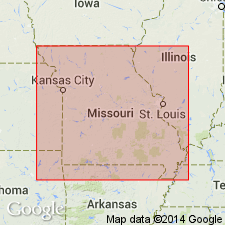
- Usage in publication:
-
- Wolf Mountain Ignimbrite
- Modifications:
-
- First used
- Dominant lithology:
-
- Ignimbrite
- Tuff
- AAPG geologic province:
-
- Midcontinent region
Summary:
First published use (except for brief mention) in central St. Francois Mountains, southeast MO, Midcontinent region. Exposed adjacent to and on west side of regional angular unconformity. (Rocks east and north of unconformity are older than rocks west of it). Unit is a crystal-rich tuff containing abundant fragmental plagioclase crystals with embayed quartz, perthitic alkali feldspars, Fe-Ti oxides, biotite and hornblende altered to chlorite. Contains rare cigar-shaped lenticules. Megascopically indistinguishable from Cedar Bluff Rhyolite. [Thickness not given.] Unit is oldest in sequence of gently westward dipping volcanic units. Younger than Butler Hill Granite; older than Iron Mountain Ignimbrite. Geologic map (fig. 1); petrologic data. Proterozoic age (1440-1480 Ma).
Source: GNU records (USGS DDS-6; Denver GNULEX).
For more information, please contact Nancy Stamm, Geologic Names Committee Secretary.
Asterisk (*) indicates published by U.S. Geological Survey authors.
"No current usage" (†) implies that a name has been abandoned or has fallen into disuse. Former usage and, if known, replacement name given in parentheses ( ).
Slash (/) indicates name conflicts with nomenclatural guidelines (CSN, 1933; ACSN, 1961, 1970; NACSN, 1983, 2005, 2021). May be explained within brackets ([ ]).

